Current Hardware:
- 1x RPi 4 w/ 2GB RAM
- management machine
- influxdb, apcupsd, apt-cacher
- 3x RPi 4 w/ 4GB RAM
- 1x ceph mon/mgr/mds per RPi
- 18x RPi 4 w/ 8GB RAM
- 2 ceph osds per RPi
- 2x Seagate 2TB USB 3.0 HDD per RPi
Current Total Raw Capacity: 65 TiB
The RPi's are all housed in a nine drawer cabinet with rear exhaust fans. Each drawer has an independent 5V 10A power supply. There is a 48-port network switch in the rear of the cabinet to provide the necessary network fabric.
The HDDs are double-stacked five wide to fit 10 HDDs in each drawer along with five RPi 4's. A 2" x 7" x 1/8" aluminum bar is sandwiched between the drives for heat dissipation. Each drawer has a custom 5-port USB power fanout board to power the RPi's. The RPi's have the USB PMIC bypassed with a jumper wire to power the HDDs since the 1.2A current limit is insufficient to spin up both drives.
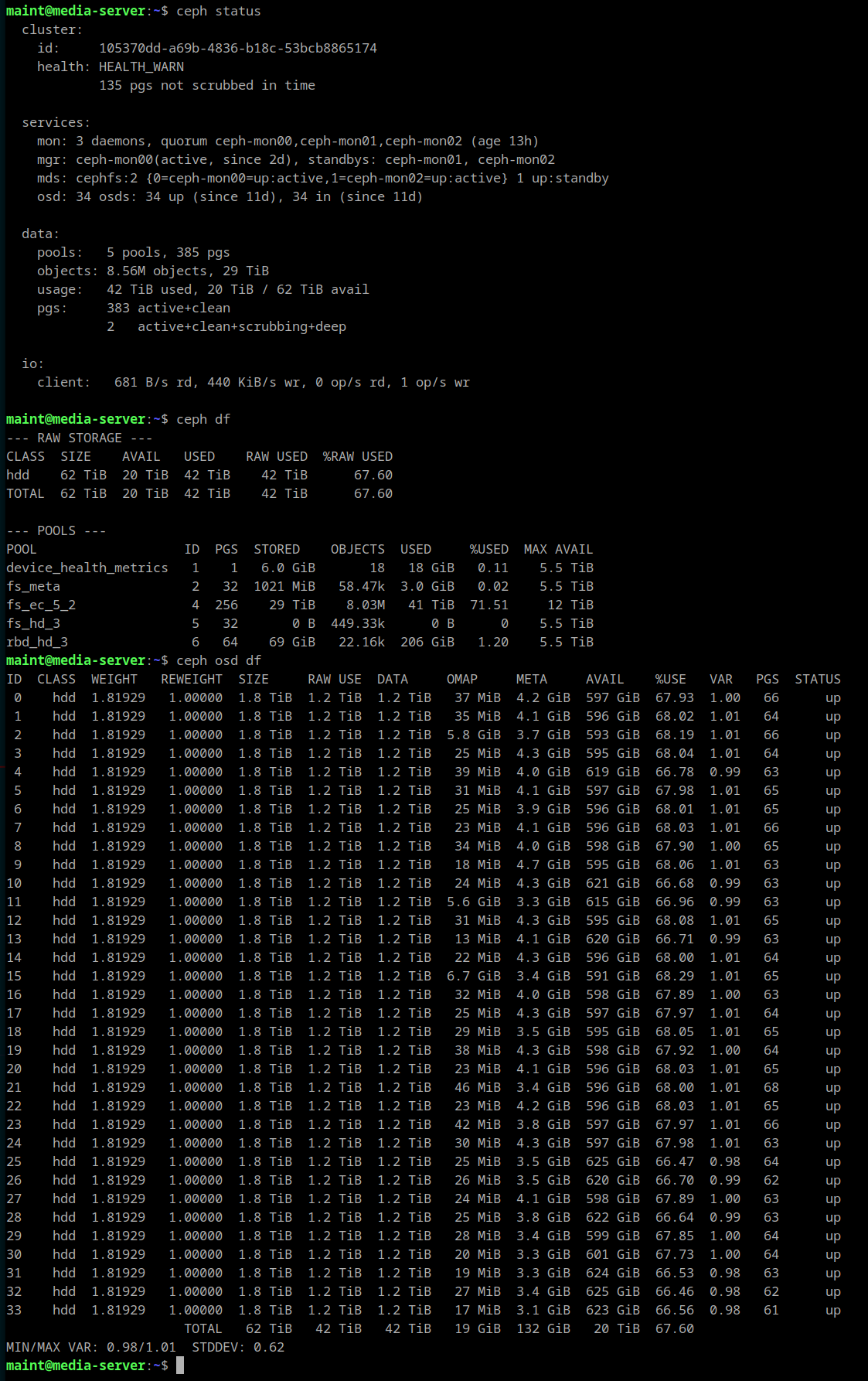
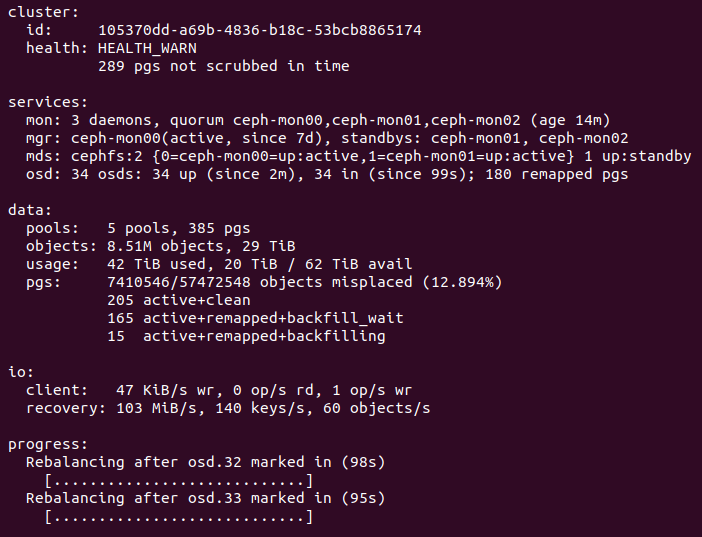
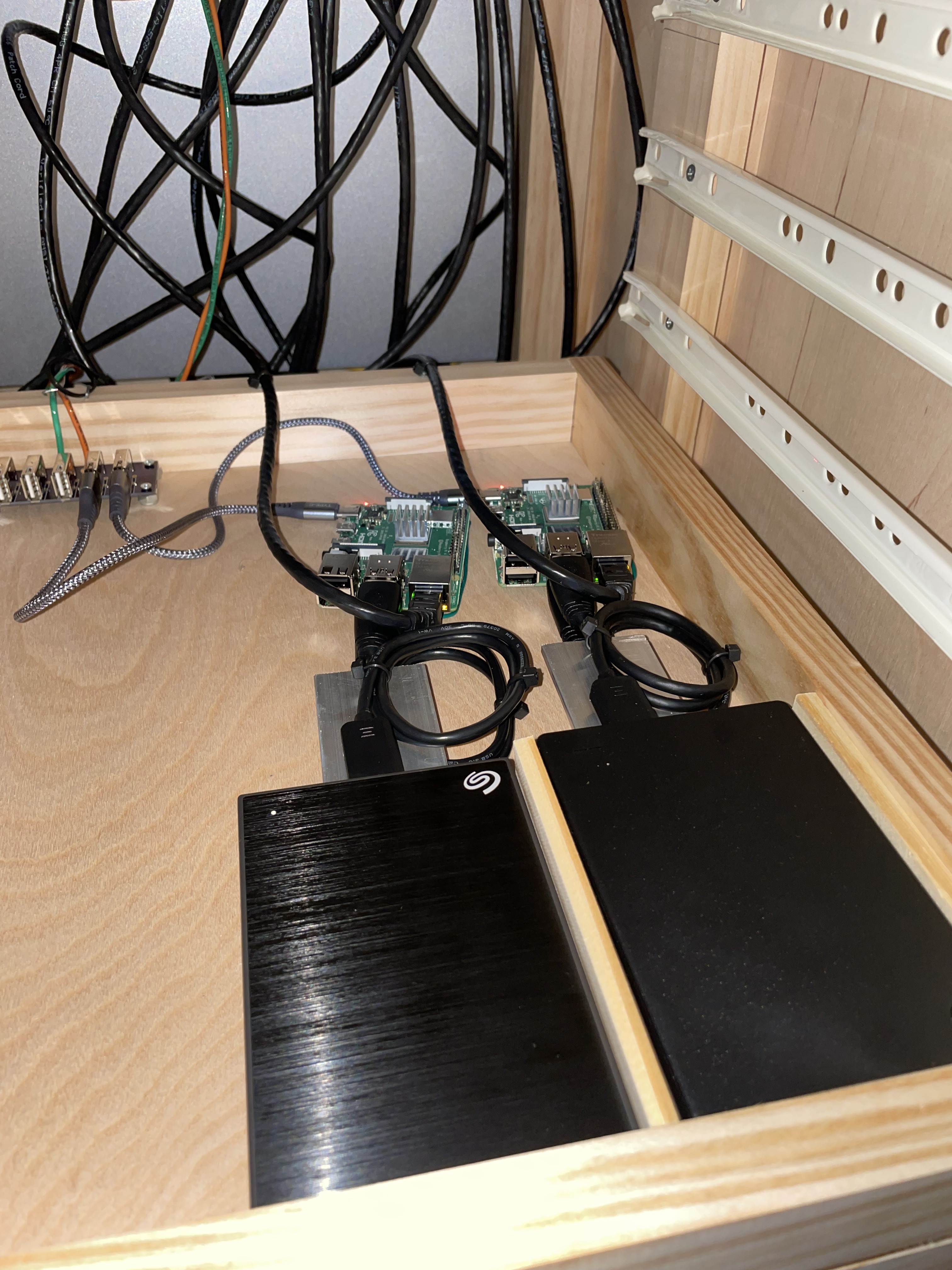
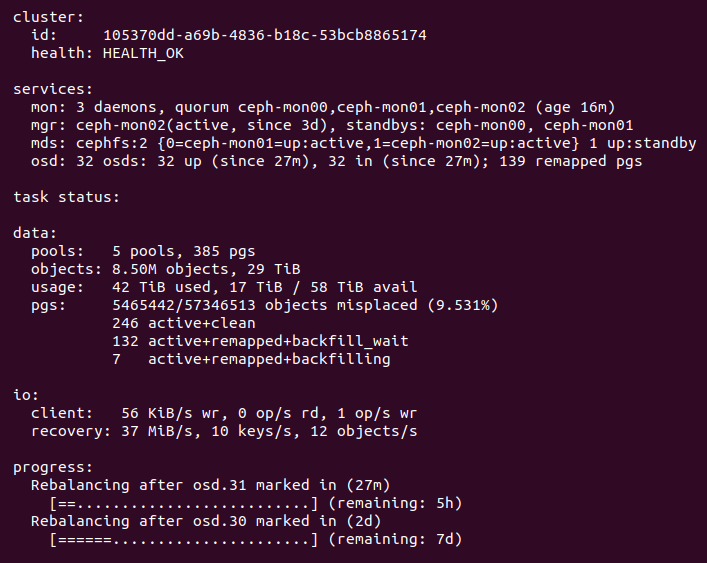
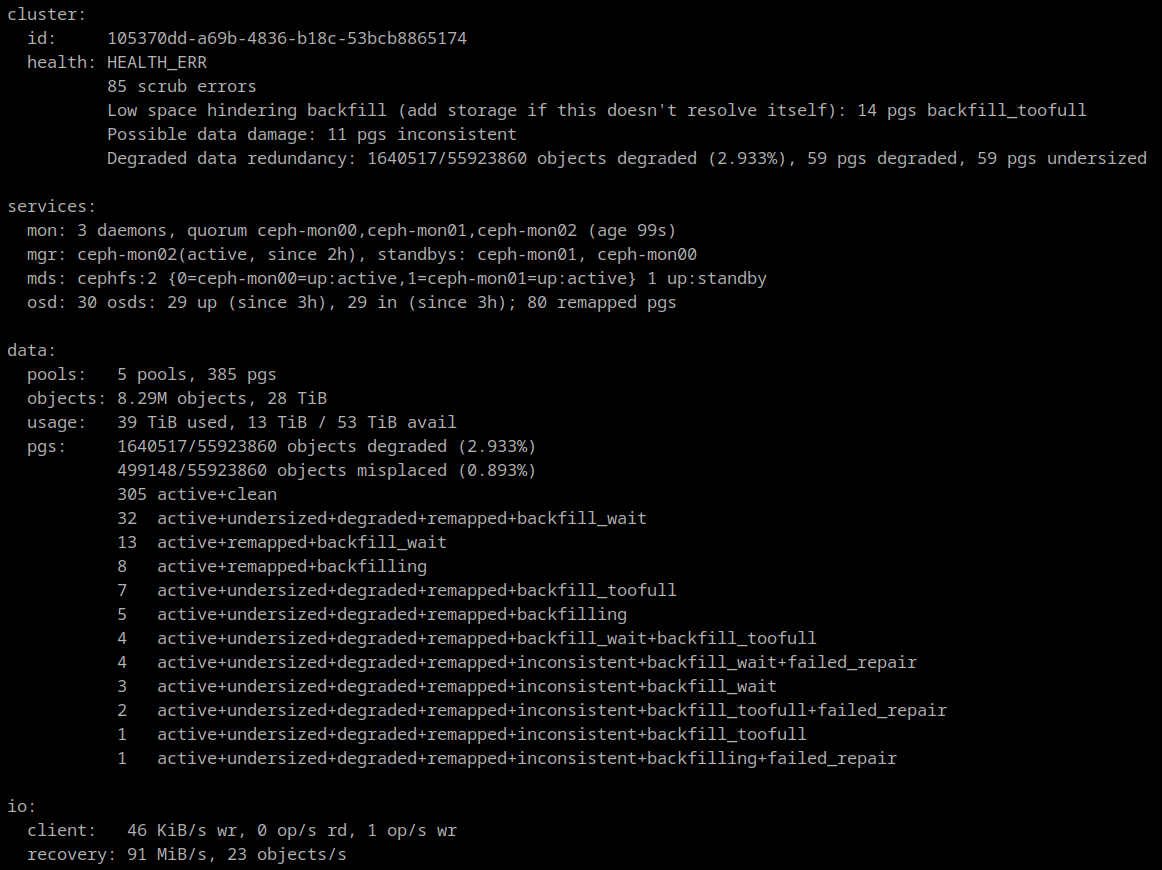
 The inconsistent PGs all have a single OSD in common: 2147483647 (formerly identified as 25)
The inconsistent PGs all have a single OSD in common: 2147483647 (formerly identified as 25)
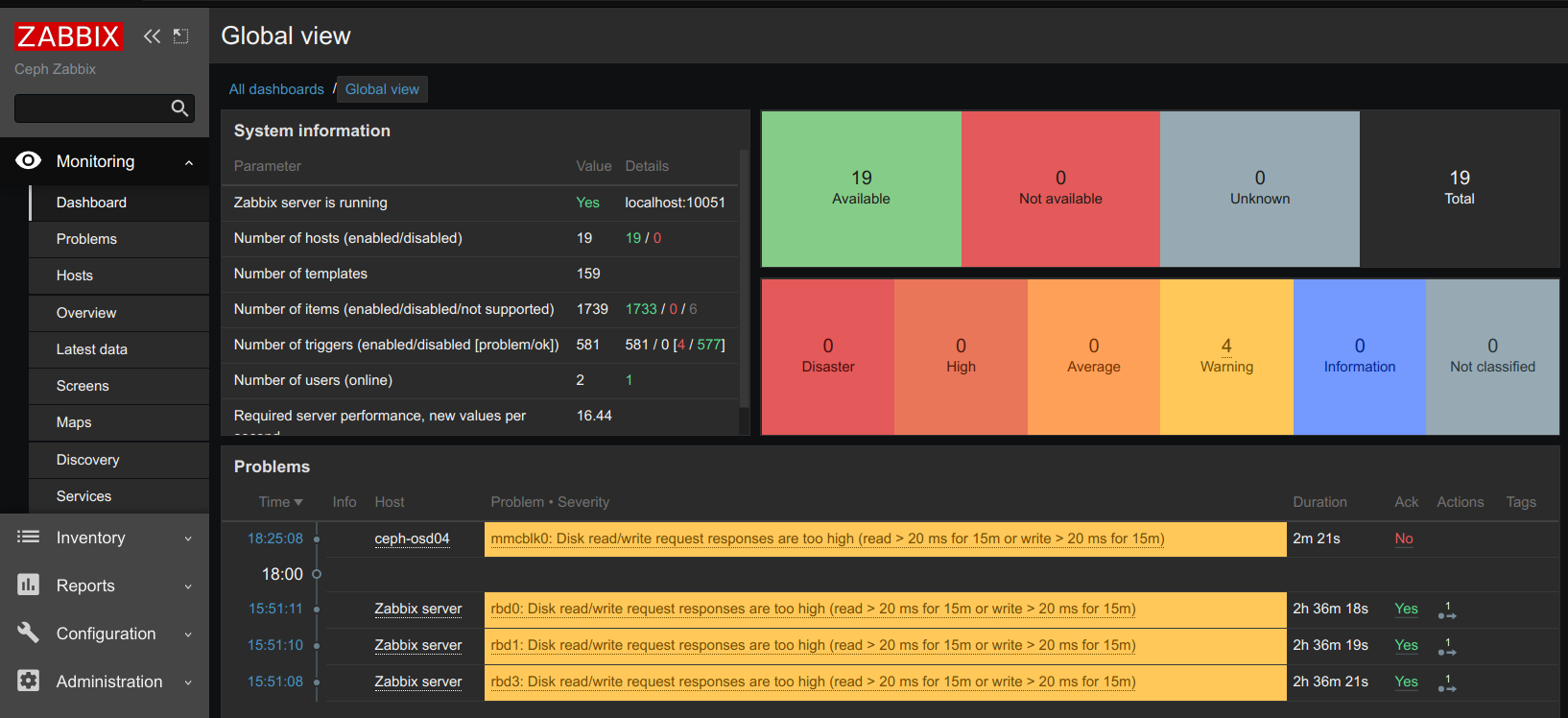
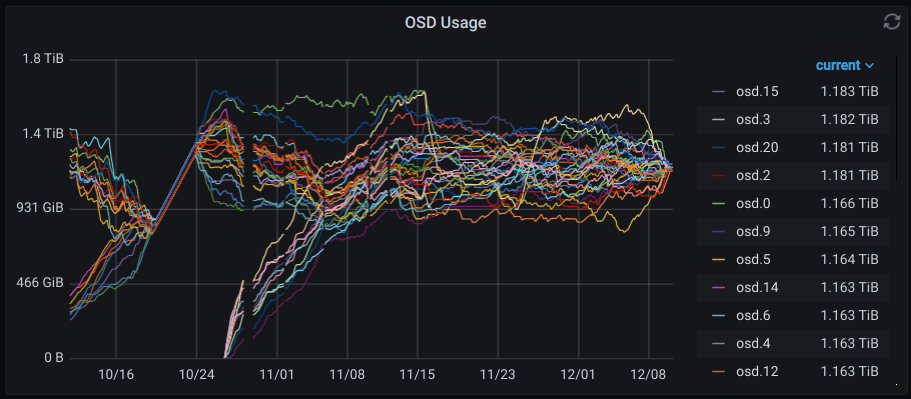
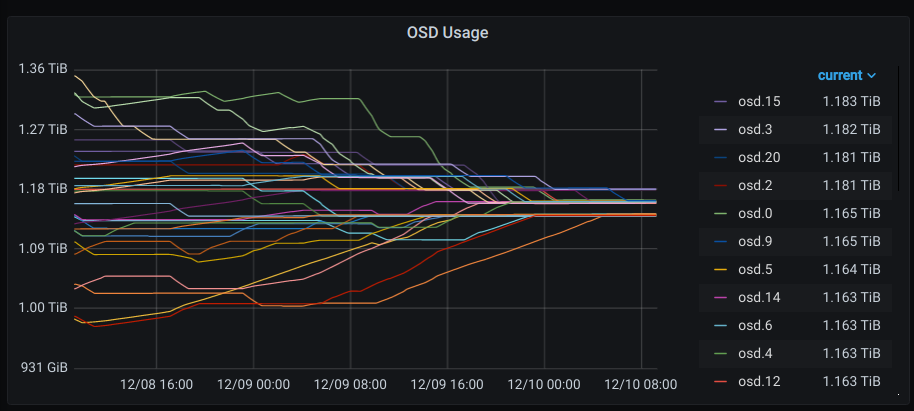
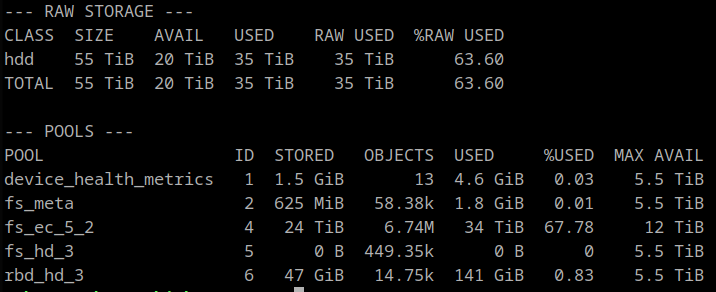
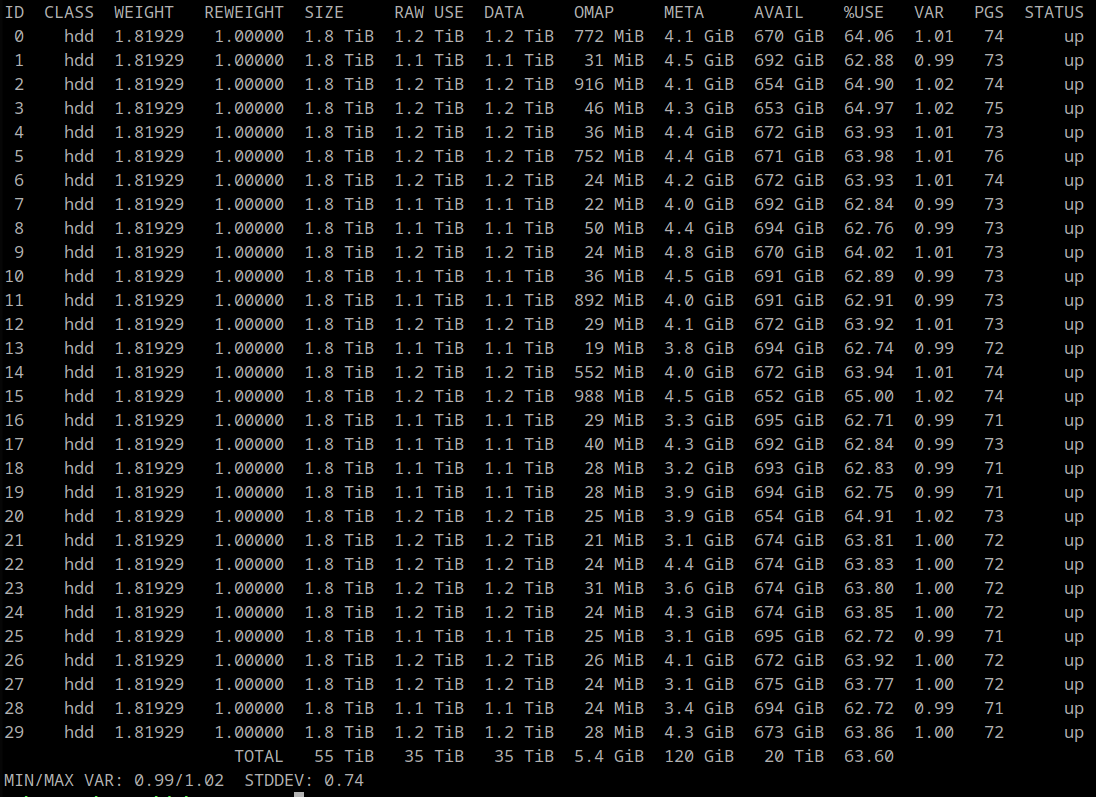












 Ken Yap
Ken Yap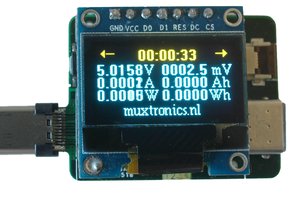
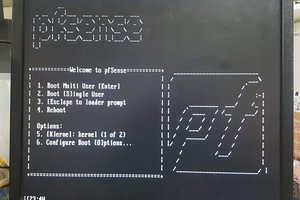
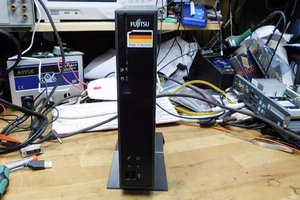
Holy crap - just learned about CEPH and found this project. Nice setup!